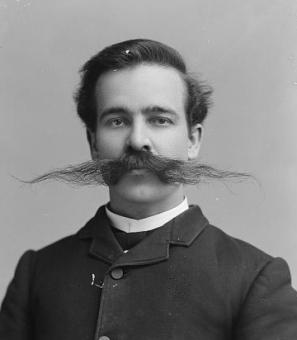Women at War: The Navy's First African American Yeomanettes
The world had gone to war – but not the Americans. A majority of U.S. voters were against joining what was seen as a “European war,” and Woodrow Wilson’s acknowledgment of that in his 1916 reelection campaign slogan (“Wilson: He Kept Us Out of War!”) is what helped him win a second term in the White House.[1] But at the same time, more and more Washington politicians were beginning to see U.S. involvement as an inevitability, not a choice. If that happened, manpower and resources needed to already be in place, so the country wasn’t caught completely unprepared. They became top government priorities, leading to the passage of both the Naval Act and the Naval Reserve Act in 1916, despite Wilson’s slogan and some Americans’ desire to stay far removed from the battlefield.
The Naval Act provided for the expansion of coastal and oceanic defense, as well as the construction of nearly 100 new ships. Ships require crews, shore-side support, food and supplies, paperwork – just to name a few things. In its attempt to successfully (and quickly) put all that into action, the Navy became “awash in its own paperwork, but every man was needed at sea.”[2] In response to the growing dire need for capable workers, the Naval Reserve Act asked “all persons who may be capable of performing special useful services for coastal defense” to join the Naval Reserve Forces.
You might notice that the word used was “persons.” Not “men,” not “male citizens,” nor even “males over the age of 18.” That was the loophole Loretta Perfectus Walsh used to become the first woman to join the Navy in 1917 who was not part of the Nurse Corps (which began in 1908). And over the next year, more than 11,000 women followed. To distinguish them from their male counterparts, they were listed as Yeoman (F), and they filled clerical positions, allowing the men who had previously held those jobs to go to war. Much of American society was shocked at the idea of enlisting women,[3] but the Secretary of the Navy, Josephus Daniels, encouraged female recruitment, directing the Bureau of Navigation to actively seek out women who either had previous clerical experience or who could learn quickly.
“Enroll women in the naval service as yeomen and we will have the best clerical assistance the country can provide.” – Josephus Daniels
A feverish campaign began to entice women into service, and the different branches of the military competed with organizations like the Red Cross and the Salvation Army to fill their ranks.[4] In the Naval Reserves, women who enlisted were entitled to the same pay grade as the men who worked in the same positions. The majority went into office jobs, though other “Yeomanettes,” as they came to be called (“Yeowomen” never really caught on) filled other vacancies.[5]
As Washington was the mainframe of the war effort, a large portion of the new enlistees were assigned to the Navy Yard in Southeast, D.C. In general, the recruits shared certain characteristics: young, childless, and white. However, as African American scholar Dr. Kelly Miller noted in his 1919 book, Kelly Miller’s History of the World War for Human Rights, those traits did not describe all the new charges. Within the Muster Roll division, something different – and significant – was happening:
“More than a dozen young colored women have been engaged in the capacity of yeowomen in this muster roll section. This is quite a novel experiment, as it is the first time in the history of the navy of the United States that colored women have been employed in any clerical capacity. And it may be noted that while many young colored men have enlisted in the mess branch of the service, it was reserved to young colored women to invade successfully the yeoman branch, thereby establishing a precedent.”[6]
According to Miller,[7] the formation of the black yeomanette corps was the work of John T. Risher, the African American chief of the Muster Roll division, who was “determined immediately in the face of all opposing precedents, to fully utilize the services, abilities and talents of the colored youth of this country.” Given the opportunity to build his unit, Risher selected talented black women, some of whom were his personal acquaintances, while others came as recommendations.
Precious little was recorded of the African-American Yeomanettes’ experiences in Washington, or even how many women served in the unit.[8] [9] [10] It seems, however, that they performed their jobs well. According to Kelly Miller, the women were known to be “cool, clear-headed, and well-poised,”[11] and were recognized by a white chief “yeowoman” as possessing “a tidiness and appropriate demeanor both on and off duty which the girls of the white race might do well to emulate.”[12]
One thing is for certain: the job that Risher hired the women to do was an important one. Working in the Muster Roll Division meant keeping track of all the men assigned to all the Navy’s ships, noting changes in assignment or duty post, and tracing chains of command. This became a monumental (and stressful) task as the Navy quickly expanded to accommodate all the new ways in which war tactics were changing. The Bureau of Navigation’s filing system went out-of-date almost overnight, posing difficulties when faced with the pressing demand for quick and accurate information on sailors’ whereabouts. So the Muster Roll Division also took on the responsibility of helping to overhaul how the Navy traced its many moving parts.[13]
The Muster Roll Yeomanettes wore the same uniform as other Yeomanettes. The regulation outfit comprised a shirt-waist (a type of blouse), a skirt, and a coat – all in either navy blue or white. Stockings and shoes were either dark or light, depending on what color uniform they wore. Also included were dark blue neckerchiefs and white cotton gloves. In the winter, they wore military-issue capes, and in all seasons, they wore a straight-brim sailor hat with a ribbon that read “United States Naval Reserve Forces.”[14] [15]
Enlistments were for four years, and white female yeomen received the same pay rate as male yeomen (it is unclear whether black female yeomen did as well). The overwhelming response of women from all over the country meant that housing for Yeomanettes of any race was hard to find; the Washington Navy Yard Yeomanettes may have lived off-base, finding lodging through the YWCA, local churches, or social contacts.
Recruitment of “Yeomanettes” was halted shortly before the end of the war in November 1918; all were officially discharged between 1919 and 1920. Some women applied – and were accepted – for civilian positions working for the government. The post-war lives of only a few of the Navy Yard’s African-American Yeomanettes are known. Sarah Taylor (née Davis) worked as a clerk for the Navy Department for 23 years, moving in influential civil rights circles.[16] According to both historian Richard E. Miller and writer Elizabeth Foxwell, Ruth Wellborn was the grandmother of Ron Brown, the Secretary of Commerce under President Clinton.[17] [18] Whatever paths they pursued after the war, whether in Washington or elsewhere, no one can deny the impact they made in the war effort or in the Navy – not least because their service opened doors to allow in African-American WAVES during the Second World War less than three decades later.
“Yeomanettes” of the Washington, D.C., Muster Roll Section[19]
Armelda H. Greene (Mississippi), Pocahontas A. Jackson (Mississippi), Catherine E. Finch (Mississippi), Fannie A. Foote (Texas), Ruth A. Wellborn (Washington, D.C.), Olga F. Jones (Washington, D.C.), Sarah [sic] Davis (Maryland), Sarah E. Howard (Mississippi), Marie E. Mitchell (Washington, D.C.), Anna G. Smallwood (Washington, D.C.), Maud C. Williams (Texas), Carroll E. Washington (Mississippi), Joseph [sic] B. Washington (Mississippi), Inez B. McIntosh (Mississippi)
Those interested in Dr. Kelly Miller's book, Kelly Miller's History of the World War for Human Rights, can find it through the Internet Archive here.
Author's note: While doing research for this article, I was aided by Dr. Regina Akers, Historian, and Sandra L. Fox, Reference Librarian, at the Naval History and Heritage Command’s Navy Department Library, and Brandee R. Worsham, Reference Librarian at the National Museum of African American History and Culture. For their time and assistance, I wish to extend my thanks.
Footnotes
- ^ “About the White House: Presidents – Woodrow Wilson,” The White House Official Website, Accessed July 26, 2018, https://www.whitehouse.gov/about-the-white-house/presidents/woodrow-wilson/
- ^ Lettie Gavin, American Women in World War I: They Also Served (Niwot, University Press of Colorado, 1997), 2.
- ^ Ibid.
- ^ Lynn Dumenil, The Second Line of Defense: American Women and World War I (Chapel Hill, University of North Carolina Press, 2017), 160.
- ^ Five “Yeomanettes” went overseas to France with medical units; others were stationed in the Panama Canal Zone or on islands in the Pacific or Caribbean. “Yeomanettes” also took jobs in fingerprinting, cryptography, translation, camouflage design, and radio and telephone operation. Some worked physical jobs in munitions productions or as truck drivers. A smaller, but historically significant, number became attachés to Naval officers.
- ^ Dr. Kelly Miller, Kelly Miller’s History of the World War for Human Rights, (Washington, D.C., Austin Jenkins Co., 1919), 597.
- ^ The first African-American to attend Johns Hopkins, a graduate of Howard University, and a dean of the College of Arts and Sciences at the latter, Miller was an intellectual and mathematician. He published his History of the World War for Human Rights in 1919, which is a rare source of information on the role of African-American women in the Navy during World War I.
- ^ Dr. Kelly Miller lists the names of fourteen women, while John Risher’s son Watson later said there were 16 women. Richard E. Miller cites a Congressional inquiry from 1939 that asserts that the number was actually 24.
- ^ Bennie McRae, Jr., “Richard E. Miller – The Golden Fourteen, Plus,” Hampton University, Accessed July 28, 2018, http://lestweforget.hamptonu.edu/page.cfm?uuid=9FEC3F39-A1CB-50EA-40E8D72CC8BED35F.
- ^ Ibid.
- ^ Ibid.
- ^ Ibid.
- ^ Miller, Kelly Miller’s History, 596.
- ^ “Women’s Uniform for Yeomen (F): 1918 – Garments and Articles of Equipment of Enrolled Women of the Naval Reserve Force,” The Naval History and Heritage Command, Accessed July 26, 2018, https://www.history.navy.mil/research/library/online-reading-room/title-list-alphabetically/w/womens-uniform-1918.html.
- ^ “Women’s Winter Uniform Regulations: 1919,” The Naval History and Heritage Command, Accessed July 26, 2018, https://www.history.navy.mil/research/library/online-reading-room/title-list-alphabetically/w/womens-winter-unifrom-regulations-1919.html.
- ^ Courtland Milloy, “A Love Story of Historic Proportions,” The Washington Post (Washington, D.C.), December 20, 1992.
- ^ “Wellborn” is how Kelly Miller spelled Ruth’s surname, but it is spelled “Welborne” on the gravestone purported to be hers: https://www.findagrave.com/memorial/49226427. Both Ruth Welborne and Ron Brown are buried in Arlington National Cemetery.
- ^ Elizabeth Foxwell, “The Black Navy Women of WWI,” American Women in World War I, September 7, 2015, https://americanwomeninwwi.wordpress.com/2015/09/07/the-black-navy-women-of-wwi/.
- ^ Miller, Kelly Miller’s History, 598.


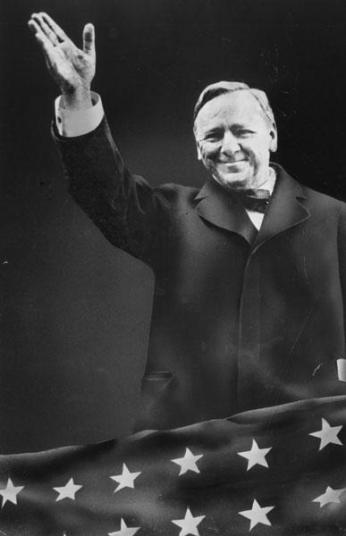
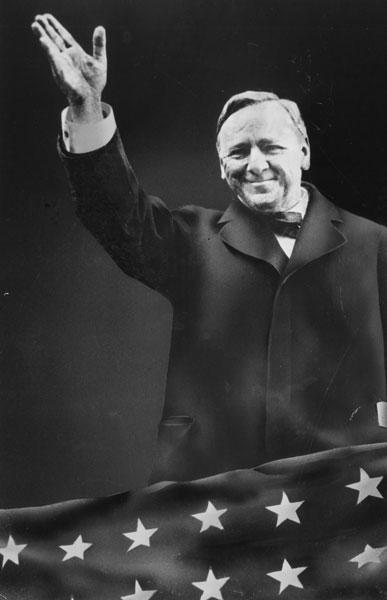
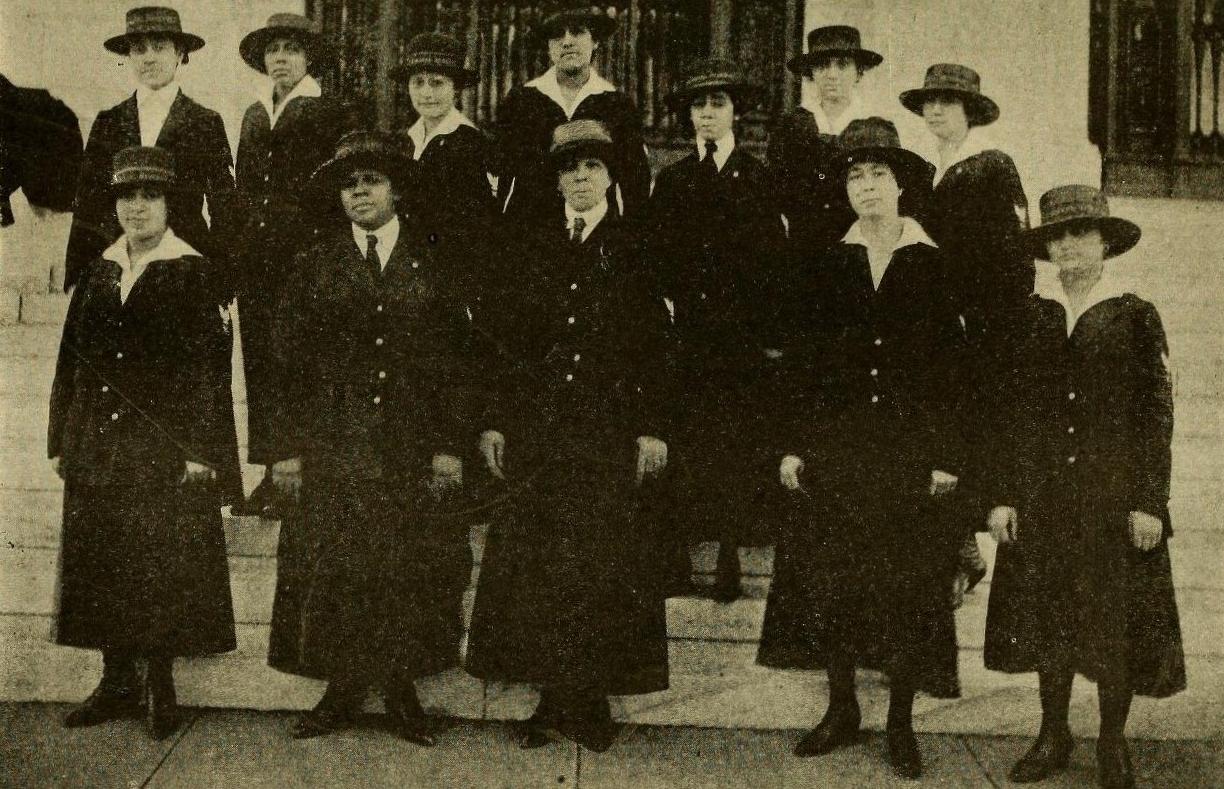
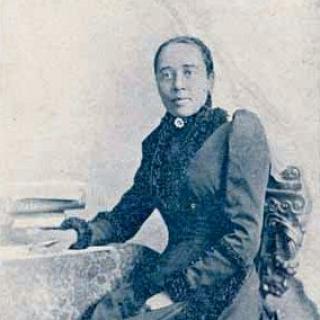
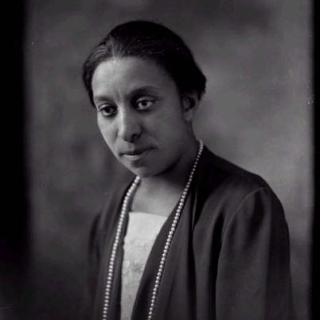
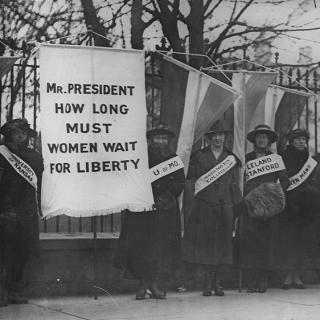
![Sketch of the mythical fuan by Pearson Scott Foresman. [Source: Wikipedia]](/sites/default/files/styles/crop_320x320/public/2023-10/Goatman_Wikipedia_Faun_2_%28PSF%29.png?h=64a074ff&itok=C9Qh-PE1)











